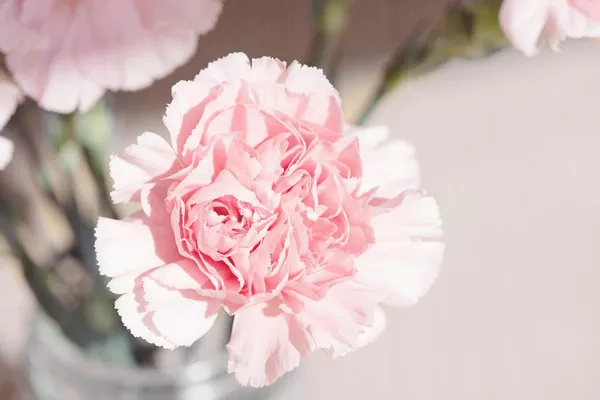Flowers have long been associated with a myriad of emotions and sentiments, with their unique beauty and fragrance often conveying unspoken messages. Among the diverse range of emotions, apologies hold a significant place in human interactions, fostering reconciliation and understanding. In this article, we explore the intriguing world of flower symbolism, with a specific focus on the flower that best represents an apology. Additionally, we delve into the history of flower symbolism, other flowers associated with apologies, and the cultural significance of floral apologies.
Flower Symbolism
Flower symbolism is an ancient art that dates back centuries, encompassing various cultures and civilizations. The language of flowers, also known as floriography, gained popularity during the Victorian era, where the meaning of different flowers became a discreet and powerful way to express feelings and sentiments. Each flower held a unique symbolic value, allowing individuals to communicate emotions without uttering a word. Since then, flowers have been an integral part of human expressions, from love and joy to grief and, indeed, apologies.
The Apology Flower: The Rose
When it comes to apologizing, the rose stands unparalleled in its representation. Among the different colors of roses, the pink rose, in particular, is most commonly associated with apologies. The pink rose exudes grace and elegance, making it an ideal choice to express sincere regret and remorse. It symbolizes appreciation, admiration, and gratitude, making it a perfect bridge to rebuild broken connections.
The History of Roses as Symbols of Apology
The association of roses with apologies dates back to ancient times. In Greek mythology, the rose was linked to Aphrodite, the goddess of love, beauty, and desire. According to the myth, the rose emerged from the seafoam created when Aphrodite wept over the lifeless body of Adonis. The tears mingled with the sea, transforming into the radiant bloom of the rose. This connection with love and sorrow paved the way for roses to become symbols of apology.
During the Victorian era, the language of flowers flourished, with roses taking center stage. Pink roses, in particular, were exchanged as a gesture of apology and reconciliation. People would use flowers as a means of communication when societal norms constrained open expressions of emotions.
Other Flowers Associated with Apologies
While the pink rose remains the most prominent symbol of apology, several other flowers carry similar connotations of remorse and repentance.
White Tulip: The white tulip signifies forgiveness and extends an olive branch to mend relationships. It embodies purity of intention and a sincere desire to make amends.
Hyacinth: The hyacinth represents a heartfelt apology and the willingness to take responsibility for one’s actions. It seeks forgiveness and a chance to start anew.
Lily: The lily symbolizes humility and a deep sense of remorse. Offering lilies to someone signifies a sincere acknowledgment of mistakes and a plea for understanding.
Blue Hydrangea: This unique flower conveys a genuine desire to understand and empathize with the hurt feelings of others, making it an excellent choice for apologies.
White Violet: White violets symbolize the desire for reconciliation and signify an attempt to reconcile differences and move forward.
Cultural Significance of Floral Apologies
The practice of using flowers to convey apologies transcends cultural boundaries and holds significance in various traditions around the world.
Japanese Culture: In Japan, the art of flower arranging, or ikebana, emphasizes using specific flowers and colors to communicate unspoken feelings, including apologies. The act of presenting flowers with a deep bow signifies a heartfelt apology and remorse.
Chinese Culture: The Chinese tradition of using symbolic flowers in ceremonies and rituals extends to apologies as well. Orchids and peonies are among the flowers used to express regret and mend broken relationships.
Native American Culture: Some Native American tribes utilize the gift of a peace pipe adorned with flowers to symbolize an apology and a commitment to harmony.
Western Culture: In the Western world, the practice of exchanging flowers as a form of apology gained popularity during the Victorian era, and it remains a common practice today.
The Impact of Floral Apologies
Flowers have a profound effect on human emotions and can significantly impact the process of reconciliation. A well-chosen bouquet of apology flowers demonstrates sincerity and thoughtfulness, breaking down barriers and softening hearts. The act of presenting flowers as a symbol of remorse often opens the door to communication and allows both parties to find common ground.
Conclusion
Flower symbolism is a beautiful and expressive language that enables individuals to communicate a myriad of emotions, including apologies. The pink rose, with its elegance and grace, holds the primary position in representing apologies. However, various other flowers, such as the white tulip, hyacinth, lily, blue hydrangea, and white violet, also carry the weight of remorse and the hope for reconciliation. The cultural significance of floral apologies further emphasizes the universal appeal of this ancient practice.
The gesture of presenting apology flowers can bridge gaps, heal wounds, and foster understanding, making it a valuable tradition that transcends time and culture. So, the next time you find yourself seeking forgiveness or wanting to mend a strained relationship, consider the profound impact of a heartfelt bouquet – a tangible and fragrant expression of remorse and the desire to set things right.


